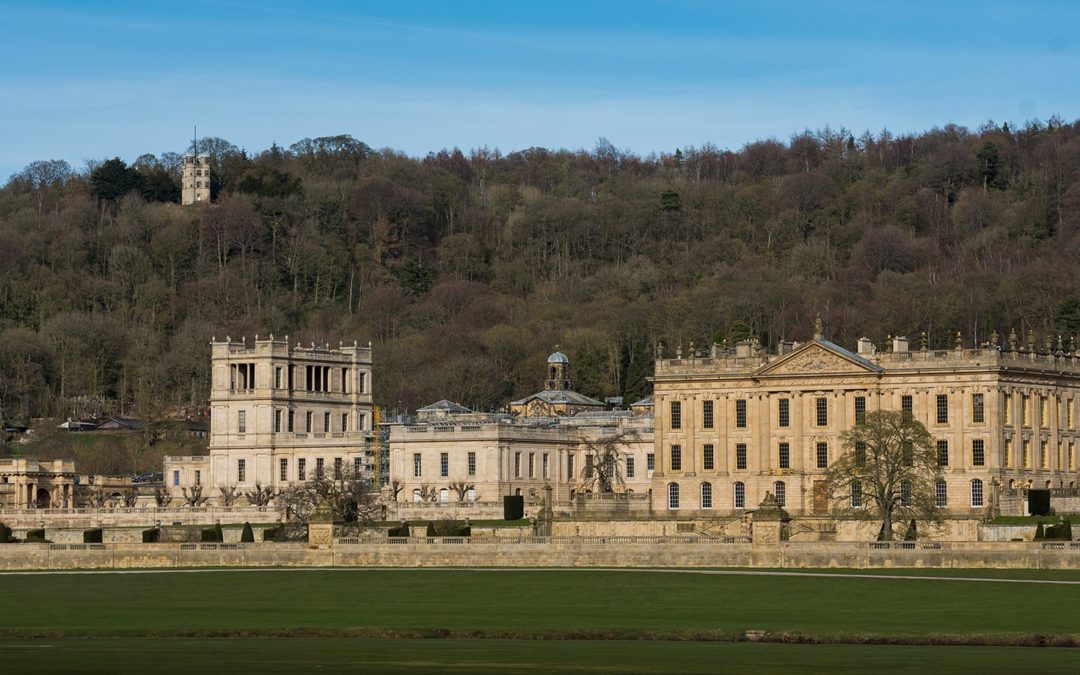A major replanting of Stand Wood, the woodland that sits on the steep hill behind Chatsworth House, is taking place to restore thousands of trees to the landscape which includes the Hunting Tower and four reservoirs.
The Forestry team at Chatsworth is hard at work planting around 25,000 new trees to create a more diverse woodland with a much wider variety of species including oak, hornbeam, birch, alder, sycamore and yew trees across its 383 acres. All of the saplings have been grown in UK nurseries and while different species grow at different rates, most of the tree canopy is expected to be above head height in the next 10-15 years.
John Everitt, Forestry Manager at Chatsworth: “We have records showing the woodland has been planted and replanted many times over the centuries. It’s part of the natural cycle with older trees and plants replaced with new growth – the trees we have recently replanted will soon grow to create a mature woodland again.”
“In fact, one of our retired foresters, Brian Gilbert, recently brought in some photos of him working in Stand Wood in the early 1960s. One particular photo caught my attention and shows a young Brian with a piece of pine pit wood slung over his shoulder (below), probably for use in the collieries that were such an important part of the local economy at the time. He’s stood on the road between the Hunting Tower and Park Gate Farm, with the timber on his shoulder being felled from the top side of the track as part of a gale tidy up during a bad winter in February 1963. In the background of the picture are young larch, beech, oak and sweet chestnut trees planted following wartime felling. These are the same larch and sweet chestnut trees which we have recently had to fell as mature trees due to the Phytophthora outbreak.”
The replanting of affected areas with a greater mixture of species will help make Stand Wood more disease-resistant as it replaces trees which had to be felled after approximately 5500 trees (3500 tonnes of wood) became infected with a deadly water mould called Phytophthora Ramorum. The mould affects bark and foliage, usually leads to death and particularly damages Larch as well as some other trees and plants.
The diseased trees were cut down to help prevent further spread of the disease to other areas of woodland on the estate and in neighbouring woodlands. Working with the Forestry Commission to identify the infected areas, the Chatsworth Forestry team felled and removed all the larch and sweet chestnut trees within these areas and in surrounding areas where larch trees were at risk.
Old paintings of Chatsworth show that the hillside behind the house was completely devoid of trees until it was replanted in the 18th century with the woodland having undergone partial felling and replanting on a number of occasions since. Among the oldest, at the crest, are several mature beech trees from the 18th or early 19th century.
Comprising nearly 4,000 acres, Chatsworth’s woodlands sequester around 8,000 tonnes of carbon dioxide equivalent a year – almost four times the annual emissions from owned and operated property in the Chatsworth Estate.
Chatsworth Forestry and Arboriculture is responsible for the stewardship and management of all woodlands and individual trees across the entire Chatsworth Estate. The woodlands are managed under the UK Woodland Assurance Standard, FSC® certified and audited annually to ensure Chatsworth is operating to the highest industry standards.
Below, Brian Gilbert in the 1960’s (left) and in 2022 (right).


